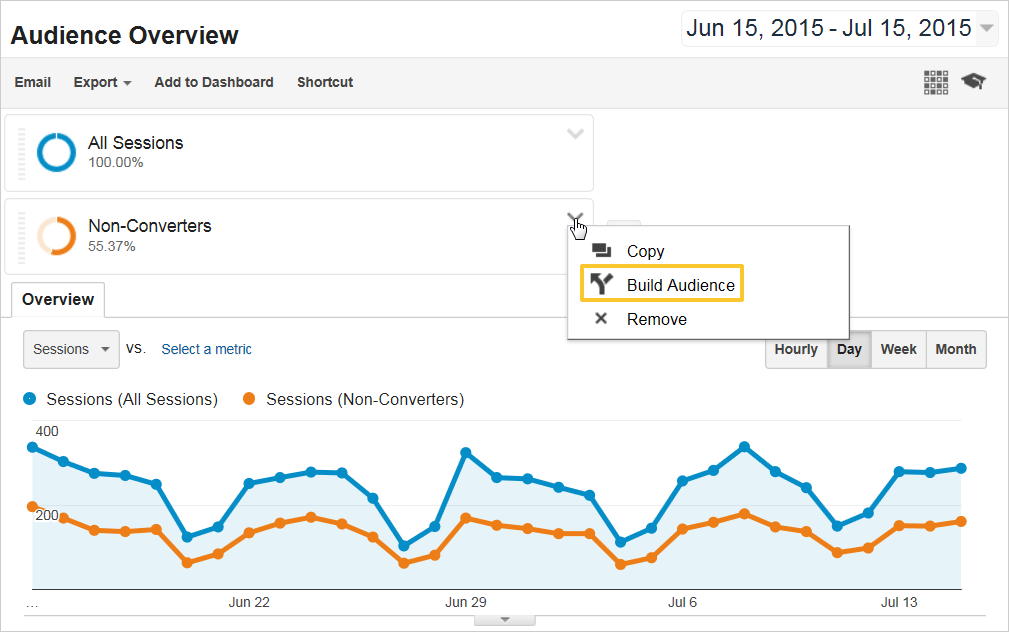Utilizing Remarketing in Google Analytics: A Comprehensive Overview
Using remarketing in Google Analytics provides businesses a critical side in getting to out to prospective consumers. This overview will drop light on the necessary actions involved in harnessing the full capacity of remarketing in Google Analytics, leading to boosted marketing results.
Recognizing Remarketing in Google Analytics
Remarketing in Google Analytics enables companies to strategically target customers who have actually formerly communicated with their website or mobile application. By leveraging data from Google Analytics, businesses can create tailored remarketing checklists based on individual behavior, such as pages gone to, activities taken, or certain objectives attained. This powerful tool makes it possible for services to re-engage with individuals who have actually revealed interest in their services or products, ultimately increasing the possibility of conversion.
Recognizing the different kinds of remarketing approaches is vital for an effective project - What Is “Remarketing” In Google Analytics?. Google Analytics uses different alternatives, including basic remarketing, dynamic remarketing, and remarketing lists for search ads (RLSA) Each kind serves a special objective and can be tailored to fulfill certain advertising and marketing goals
Furthermore, analyzing the performance of remarketing campaigns is vital for enhancing outcomes. Google Analytics provides useful understandings into the effectiveness of different remarketing techniques, permitting businesses to make data-driven decisions and improve their targeting approach. By continually adjusting and keeping an eye on remarketing initiatives based on analytics information, companies can optimize ROI and drive success in their advertising initiatives.
Setting Up Remarketing Projects

After establishing target market lists, the next action is to link Google Analytics with Google Ads. By connecting these 2 platforms, companies can perfectly transfer target market checklists from Google Analytics to Google Advertisements for remarketing functions. This integration enables even more accurate targeting and better campaign performance.
Once the accounts are connected, organizations can develop remarketing projects in Google Advertisements utilizing the target market lists previously specified in Google Analytics. These projects can be personalized with details ad creatives, messaging, and bidding approaches to properly re-engage with previous visitors and drive conversions. By adhering to these steps, companies can take advantage of the power of remarketing to improve their advertising and marketing initiatives and enhance ROI.
Making Use Of Audience Division Techniques

Predefined segments in Google Analytics permit you to webpage promptly examine typical target market groups like new individuals, returning users, or users who finished a details objective on your internet site. Personalized sections, on the various other hand, enable you to produce unique sections based upon specific criteria that are very important to your business goals. Dynamic remarketing checklists automatically change based on individual habits, showing tailored advertisements to customers who have actually communicated with your site specifically methods.
Analyzing Remarketing Efficiency Metrics
Upon assessing the performance of remarketing projects in Google Analytics, the analysis of essential performance metrics provides important understandings into target market interaction and conversion prices. By delving right into metrics such as click-through prices (CTR), conversion rates, price per acquisition (CERTIFIED PUBLIC ACCOUNTANT), and return on ad spend (ROAS), marketing experts can gauge the success of their remarketing useful site initiatives. Analyzing why not try this out these metrics enables marketing professionals to maximize campaigns, improve audience targeting, and allocate budget plans properly to boost overall remarketing efficiency.
Maximizing Remarketing Strategies
When refining remarketing methods in Google Analytics, concentrating on audience segmentation is paramount for accomplishing project success. By separating your target market into particular sectors based upon their habits, demographics, or passions, you can customize your advertisements a lot more successfully per team. This targeted strategy increases the probability of engaging customers who have actually currently revealed passion in your service or products, leading to greater conversion rates.
Another essential aspect of maximizing remarketing methods is continuously testing and refining your projects (What Is “Remarketing” In Google Analytics?). A/B screening different advertisement creatives, messaging, or offers can aid you recognize what resonates ideal with your audience and drives one of the most conversions. By examining the efficiency of these tests in Google Analytics, you can make data-driven decisions to maximize your remarketing efforts even more
Moreover, leveraging dynamic remarketing can considerably enhance your project results. This function enables you to show individualized ads to users based on their past communications with your internet site, showcasing services or products they have actually previously checked out. By supplying tailored content to users based on their actions and interests, dynamic remarketing can assist increase interaction and drive conversions.
Final Thought
In final thought, using remarketing in Google Analytics is a tactical technique to target individuals who have formerly involved with a web site. By creating tailored target market listings and utilizing audience segmentation techniques, organizations can enhance remarketing campaigns for boosted conversion rates. Assessing performance metrics and continually optimizing techniques are important for maximizing the performance of remarketing efforts.
Google Analytics supplies different alternatives, including common remarketing, dynamic remarketing, and remarketing lists for search ads (RLSA)After setting up audience checklists, the next action is to connect Google Analytics with Google Advertisements. By linking these two systems, businesses can effortlessly transfer target market checklists from Google Analytics to Google Advertisements for remarketing objectives.Once the accounts are connected, businesses can produce remarketing projects in Google Advertisements making use of the audience provides previously defined in Google Analytics.When refining remarketing approaches in Google Analytics, focusing on audience division is extremely important for achieving project success.